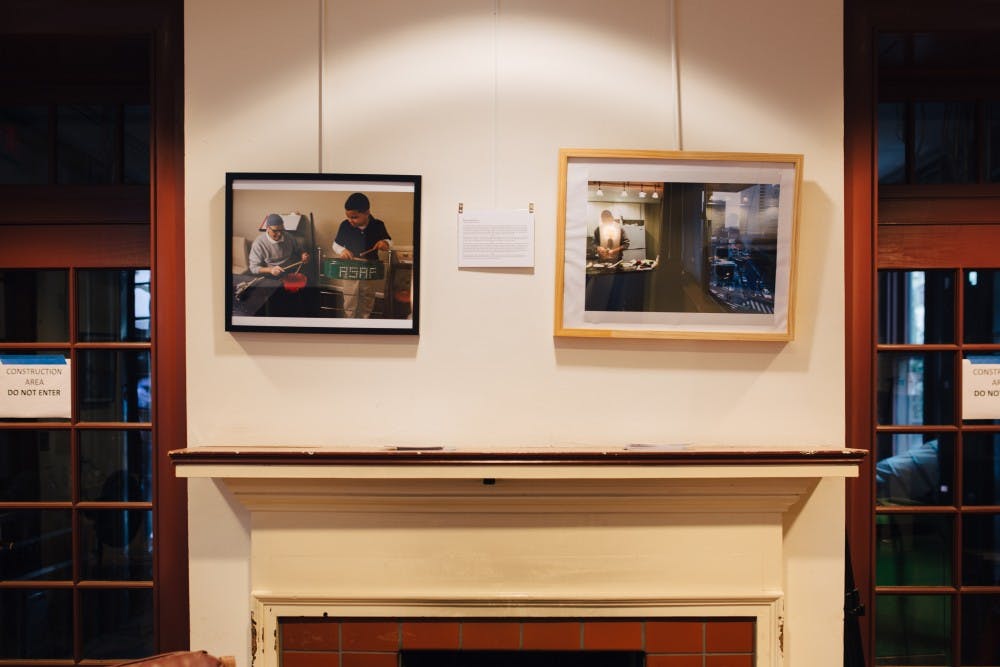In the Class of 1942 Garden right next to the Kelly Writers House hangs ten photos, each with a quote from the figures captured. Some on the street, some by their home front entries, some next to Philly landmarks. This is the Las voces de María Gallery, telling the story of Puerto Rican families who came to Philadelphia after Hurricane Maria raked over their home island.
The gallery is a part of a multimedia project, Las voces de Maria, facilitated by writer Syra Ortiz–Blanes and photographer Cameron Hart, that profiles Puerto Ricans in Philly who were displaced by Maria. The desperation followed the storm’s devastation continues to ripple a year after it hit the island. An estimate of 2,975 people have passed away in the wake of the disaster and the effects that have unfolded over the past months. As one of the most horrific disasters to hit the island, it has wracked devastation in the most basic infrastructure—for water, electricity, communications, and medical care. Since then, some have returned home, while others have moved to other cities, their own homes still inhospitable.
“I felt helpless after Hurricane Maria. I went back in November and it was surreal. I was hyper aware in the ways in which little things were missing or broken. It was horrible to see where I grew. It was completely changed,” Syra said. “My family was doing relatively well but they were still having a very hard time.”
Yet despite the evident destruction, media coverage and reporting has not remained consistent. The original official government toll of 64 casualties was off by a factor of 45. Some have claimed that the 2,975 figure was merely a figment of a partisan ploy to unravel the credibility of the administration’s handling of the event. Online, Hurricane Maria received only a third as many mentions in text as Harvey and Irma. Little effort was made to share the stories and experiences of the very people who survived the storm.

This is how the idea of Las voces de Maria came about. Translated as “The Voices of Maria,” the gallery serves as a stage for those who survived the storm to share their stories and have their voices heard and a platform for people to get an inside, genuine look at the community. Reaching out to her network of Puerto Ricans as a native Puerto Rican herself, Ortiz–Blanes spent hours listening to stories of tragedy and heartbreak in hotels, cramped basements, coffee shops, apartments, and homes of evacuees’ relatives and friends, unraveling their unheard stories and sentiments. Some of them shared their experiences for the first time. Before Ortiz–Blanes, no one had ever asked them who they were, what they were doing, or how they were doing.
The spoken word, though perhaps cathartic for some, is simultaneously also a reliving of the storm. The people were still reeling from the trauma, and the reconstruction of their narratives—counting their losses and reflecting on their life before and after Maria—is crucial to the healing process.
In a way, though, that’s what made this project work. Hoping to give the people more control over their narratives, Ortiz–Blanes harnessed this emotion to empower those who have had their own experiences rewritten. “People who have no control over their lives could have this piece of agency. They can’t control what happens but they can control how the stories are told through their own voices,” Syra commented, “which isn’t always necessarily the case.”
This agency is seen in the photos too. In portraying the families, Hart left the creative direction to them, presenting them as how they wanted to be portrayed. Some of them chose to be photographed in their new home, some in their favorite neighborhood, and some next to their first destination as they arrived in the city. Shadowing the people around, Hart participated in their life and by the end of the shoots, despite the language barrier, they “had become friends even though [they] didn’t talk much,” as he described.
Las voces de Maria is a process of understanding and reconstruction. Each story provides people with the space to share their perspectives and feelings, and us an opportunity to get to know the reconstruction of Puerto Rican community in the aftermath of Maria a little bit more.

